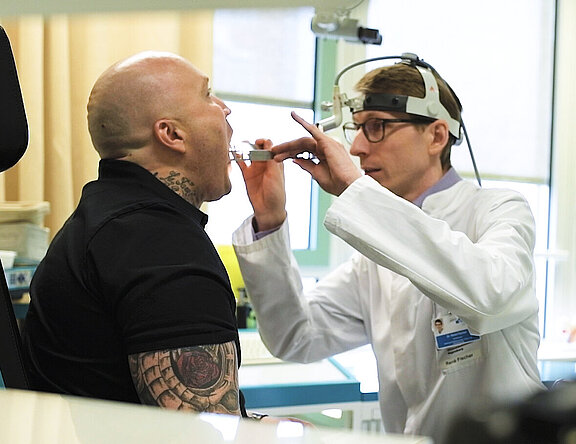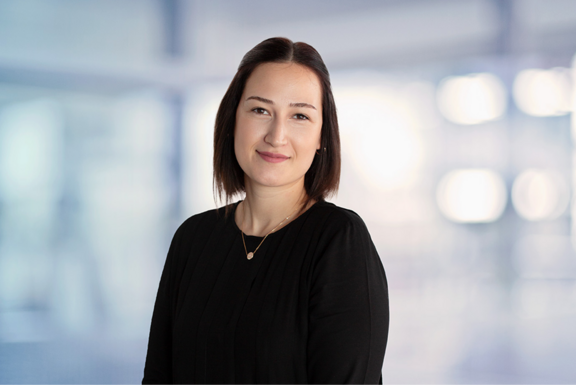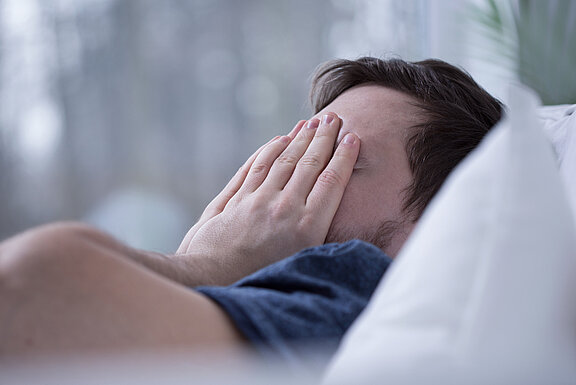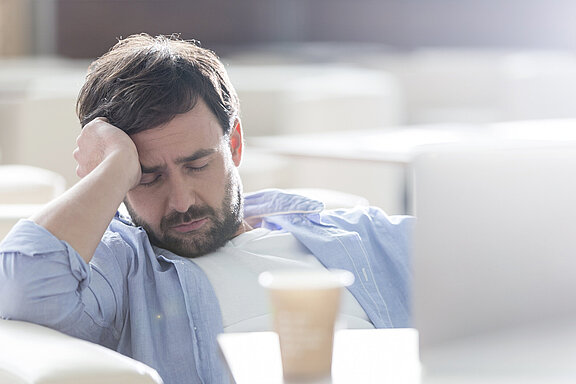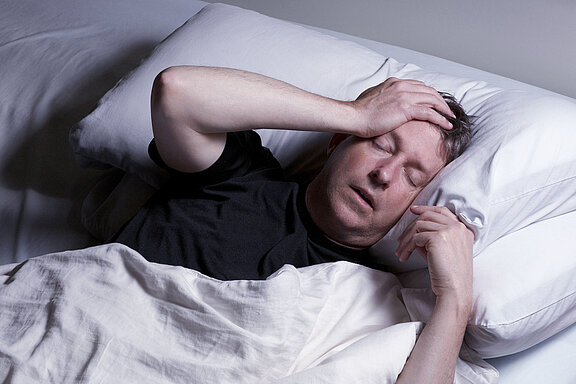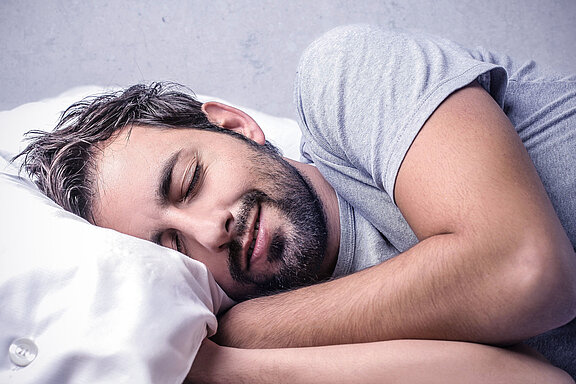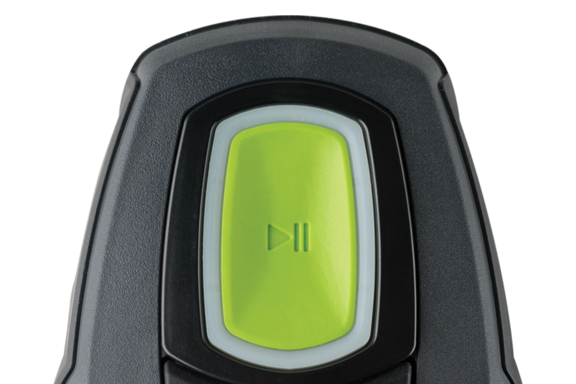Symptoms of obstructive sleep apnoea (OSA)
Obstructive sleep apnoea not only reduces the quality of life considerably, in the worst case it can even be life-threatening. If you make loud snoring noises when you sleep, if you are also constantly tired during the day, or if you experience any of the other symptoms listed below, it is advisable to see a doctor promptly and get to the bottom of the matter. It could be obstructive sleep apnoea. And there is another suspicious factor that points in this direction: excess weight. Around 80 percent of all OSA sufferers weigh too much kilos.1
At a glance: Typical symptoms of obstructive sleep apnoea
- Loud snoring
- Palpitations and rapid pulse, high blood pressure in the morning
- Restless sleep, startling from sleep possibly with a feeling of suffocation
- Tiredness and listlessness during the day, spontaneous nodding off („microsleep“)
- Headache in the morning
- Drop in performance
- Lack of concentration
- Forgetfulness
- Erectile dysfunction, sexual sensation disorders
- Depressive mood
- Excess weight

The number of unreported cases of obstructive sleep apnoea is high. Since those affected themselves are usually unaware of their sleep problems, information from partners, family, friends or even colleagues is of great value. They are often the ones who urge snorers to see a doctor – but often without success. However, there are good treatment options that can prevent the breathing pauses. With a suitable therapy, you will regain a lot of quality of life: You can sleep undisturbed again and wake up rested in the morning. In addition, the therapy protects you from possible secondary risks such as high blood pressure, heart disease, type II diabetes or a stroke.
Suspected OSA: what is the diagnostic process?
If obstructive sleep apnoea is suspected, various examinations are carried out step by step to confirm the diagnosis. The most reliable method of diagnosis is polysomnography in the sleep laboratory. First, however, less elaborate examinations are carried out to confirm or refute the suspicion.
The first point of contact is your GP, who will first ask you in detail (anamnesis). He may also involve your partner. Describe your observations to the doctor in detail, as these are very important for the diagnosis. Your doctor will also address the topic of sexuality, because sexual sensation disorders or erectile dysfunction can be associated with obstructive sleep apnoea. Standardised questionnaires specifically designed for the diagnosis of chronic sleep apnoea may be used in the anamnesis.
The interview is complemented by a comprehensive physical examination, which includes weight checks and blood pressure measurement. Obesity can not only be a symptom, but is also an important risk factor for developing OSA. High blood pressure is a common secondary disease that is largely responsible for the increased risk of heart attacks and strokes. Corresponding indications during questioning and examination lead to the suspected diagnosis of ‘obstructive sleep apnoea syndrome’. All the sequelae and symptoms together are called obstructive sleep apnoea syndrome (OSAS).
Diagnosis Step 1 – Medical history:
- The GP notes symptoms and observations
- Partner can provide important clues for diagnosis
- Possibly use of a standardised questionnaire
- Followed by a physical examination (including weight check/blood pressure measurement)
What is a polygraphy?
Polygraphy is, so to speak, a mini version of the examination in the sleep laboratory and is therefore also called a ‘small sleep laboratory’. It is a question of confirming or rejecting the suspected diagnosis. Therefore, it must be examined during sleep whether breathing stops actually occur and how the body reacts to them: Does the oxygen content of the blood drop as a result of the breathing stops? Is the blood pressure rising? Does the heart start to stumble?
As a rule, a polygraphy is first on the programme. This ‘screening procedure’ (OSAS screening) is less time-consuming than an examination in the sleep laboratory, but already provides important indications as to whether there is something to the suspected diagnosis.
You perform the polygraphy yourself – in the comfort and relaxation of your own home. Don’t worry: you can’t go wrong with it. Your doctor will explain everything to you in detail. Afterwards, you take the polygraph home with you, which can be easily transported in a handy case. Then, before you go to bed at night, all you have to do is attach some probes. The device does the rest all by itself. If the GP has the appropriate qualification, this diagnostic step also takes place under his supervision. Otherwise, your GP will refer you to a specialist – a sleep doctor.
During sleep, the polygraph device registers the respiratory flow and any pauses in breathing, the respiratory movements of the chest and abdomen, the oxygen content of the blood, the heartbeat, snoring sounds and the sleeping position. Based on the recordings, the doctor can later see if ‘unusual things’ have happened during sleep. If the polygraphy reveals indications of obstructive sleep apnoea, a final examination is carried out in the sleep laboratory. Your doctor will discuss this with you in detail and issue a referral to a sleep medicine centre.2
Diagnosis Step 2 – Polygraphy:
- The home sleep lab to confirm suspected diagnosis after history. You will receive a polygraph machine from the doctor, which you will take home after an introduction.
- Before sleeping, place the device on the bed and attach the probe.
- The device now autonomously measures breathing movements, respiratory flow, oxygen content in the blood, sleeping position and snoring sounds.
- Evaluation of the polygraphy by the doctor – then referral to the sleep laboratory if necessary.
What is polysomnography?
The examination in the sleep laboratory, during which a large number of measurements are taken, is called polysomnography.3 This conclusively confirms the suspected diagnosis of obstructive sleep apnoea. In the sleep laboratory, similar examinations are carried out as in polygraphy, but the data obtained are even much more precise and comprehensive. The sleep profile obtained includes a large number of measured variables, which together allow a reliable statement as to whether obstructive sleep apnoea is present or not. At the same time, polysomnography can be used to determine the severity of the disease. Among other things, the apnoea-hypopnoea index (AHI), which indicates how many pauses in breathing occur in one hour, is important.
The examination is usually carried out in a sleep medicine centre. This means you stay here for one night or possibly several nights. You will be accommodated in a patient room – a single room – which is usually furnished more like a hotel room than a hospital room. You should feel comfortable so that you can sleep as relaxed as possible.
You will be wired before going to bed: Electrodes are attached to the chest and arms or legs to record the electrical heart signals (electrocardiogram, ECG). Using the long-term ECG, the doctor can then see how your heart behaves during sleep: Does it beat evenly or does it perhaps stumble when breathing stops? Blood pressure is also monitored continuously. And the brain waves during sleep are also registered (encephalogram). For this purpose, electrodes are applied: four to six on the head, and five on the face.
In addition, the so-called sleep architecture is also examined. The REM sleep (Rapid Eye Movement) has a special significance. During REM sleep, the eyes move back and forth at lightning speed. Now we dream and process what we have experienced during the day. REM phases normally increase during the night and are important for a healthy sleep architecture. That’s why the sleep lab also logs eye movements, which are clearly visible under the closed eyelids. If the sleep architecture is disturbed, sleep is not properly restful, which can lead to typical OSA symptoms such as daytime sleepiness and lack of concentration.
In addition, you will be filmed with a video camera while you sleep – of course only if you have expressly consented to this. The camera records, among other things, whether there are any waking reactions with body movement during sleep, which is a sign of breathing cessation. In order to detect respiratory disorders, the air flow at the mouth and nose is also registered with special sensors.
Diagnosis Step 3 – Polysomnography:
- Referral to a sleep medicine centre
- Overnight stay at a sleep lab: Sleep measurement and analysis
- Evaluation of the polysomnography, if necessary with subsequent treatment planning
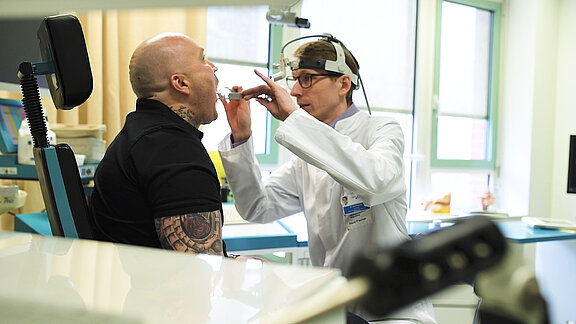
At a glance: What is measured in the sleep lab?
- To assess dream sleep and depth of sleep: Brain waves (EEG) and eye movements
- Heart rate and heart rhythm (ECG)
- Oxygen content of the blood
- Breath flow at mouth and nose
- Snoring sounds
- Breathing movements of the chest and abdomen
- Muscle tension of the chin
- Leg movements
- Body position
The various examinations that are carried out as part of polysomnography are completely painless and the sleeper does not notice anything at all. The only thing that might be a little annoying at first is the cabling. I’m sure you’ve asked yourself: Is it even possible to sleep at all with all the electrodes and wires? Yes, you can. On the part of the sleep laboratory team, everything is done to make the examination situation as comfortable as possible. The quite fine cables are bundled and laid in such a way that they interfere as little as possible with freedom of movement and sleep.
Nevertheless, you may not sleep as well the first night as you would at home. Maybe you find it difficult to fall asleep or you wake up more often in between. Besides, you don't sleep the same way every night anyway. For example, with obstructive sleep apnoea there are ‘good nights’ with few breathing pauses and ‘worse nights’ when the pauses increase. The first night in the sleep lab often tends to be one of the good nights (first night effect). That is: If one were to judge only this first night, the disease would appear more harmless than it really is. Therefore, if it is suspected that you have obstructive sleep apnoea, you will usually be observed for several nights in the sleep laboratory.4
Sleep Lab 1x1
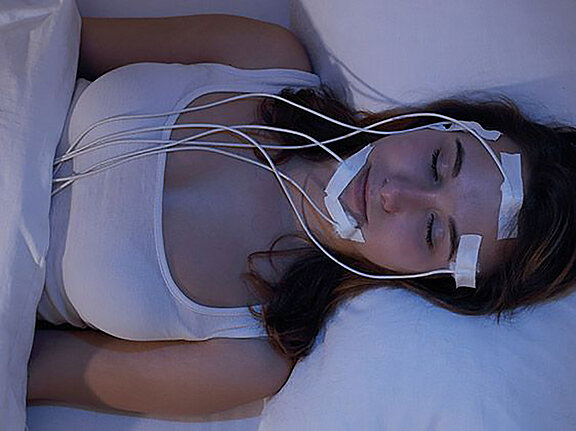
- Do not sleep during the day.
- Avoid caffeinated drinks such as tea and coffee from 14:00 at the latest.
- Wash your hair and avoid using cosmetics, hair gel and hair spray to help the electrodes stay on your head.
- Inform doctors about diseases and medication in the preliminary discussion. Certain medications may need to be discontinued before the night in the sleep lab.
- Pack a toilet bag, toothbrush and sleeping clothes. Tip: Ask the lab if you can bring your own pillow.
In the sleep lab, you are monitored by the nurse in a separate room throughout the night. You can call and easily go to the toilet.
Some sensors are placed on the body, but these usually present no problem after a short time. They are indispensable for successful examination and diagnosis. The following sensors are used in polysomnography:
- Electrodes on the head to monitor brain waves, eye movements and muscle activity of the chin
- Electrodes on the chest with which the ECG is recorded
- Abdominal and chest belt with strain sensors to measure breathing movements
- Sensor on the chest strap that registers the body position
- Breath flow sensor between mouth and nose
- Sensor on index finger or earlobe to measure oxygen saturation in the blood
- Two electrodes on each lower leg to record leg muscle movements
- Microphone on the larynx for recording snoring sounds
Not everyone sleeps worse in the sleep lab than at home. There are even some patients who sleep better because there is no pressure to fall asleep quickly or to go to work the next day. Either way, polysomnography works correctly in both cases and can reliably confirm or refute the diagnosis of sleep apnoea.
Does the health insurance cover the costs?
Polysomnography in the sleep laboratory is - as you know by now - crucial to diagnose obstructive sleep apnoea with certainty. This is why the NHS covers the costs if a doctor's referral is presented.
References:
1 Deutscher Berufsverband der Hals-Nasen-Ohrenärzte e.V. Online available at: www.hno-aerzte-im-netz.de/krankheiten/schnarchen-schlafapnoe/definition-und-haeufigkeit.html; Last accessed: April 2020.
2 Deutsche Ärzteblatt. Available online at: www.aerzteblatt.de/archiv/175026/Verdacht-auf-Schlafapnoe-Wann-Ueberweisung-in-ein-Schlaflabor; Last accessed: April 2020.
3 German Society for Sleep Research and Sleep Medicine (DGSM). Available online at: www.dgsm.de/downloads/dgsm/arbeitsgruppen/ratgeber/neu-Nov2011/Untersuchung_A4.pdf; Last accessed: April 2020.
4 Büttner A, Rühle KH. The need for the PSG: First Night Effect in OSAS. Pneumology. 2007;61-A3. doi: 10.1055/s-2007-985688.

